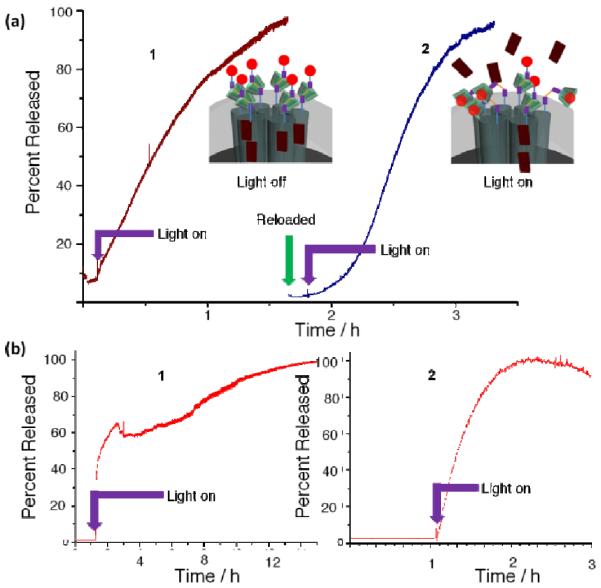Fig. 3.

(a) Time resolved fluorescence spectra showing the light activated (403 nm) release of alizarin red S (ARS) dye from FRS1-MSN. Initial loading of the particles results in minimal release prior to irradiation (trace 1). When the pump beam is activated, ARS fluorescence steadily increases in the supernatant. After the release is complete, FRS1-MSN were reloaded with ARS and washed before reinitiating cargo release. Trace 2 shows these reloaded FRS1-MSN releases ARS equally as well. An identical experiment was performed on the EXT2-MSN system (b) using PI dye instead. EXT2-MSN exhibits the same behavior as FRS1-MSN with the larger fluorophore. These results demonstrate that the full rotaxane systems are reversible, reusable and can bedesigned to release different sized cargos.
